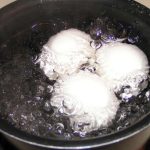Silicone molds are becoming more popular in the cake world as they offer a quick and easy way to bake cakes with minimal effort. However, one thing that can be tricky is removing the cake from the mold without damaging it.
For the best chances of success, make sure the cake is completely cooled before attempting to remove it from the mold. If the cake is even slightly warm, it is more likely to stick to the mold and tear when you try to remove it.
To remove the cake, start by gently pushing on one side of the cake. A knife or spatula can also be helpful in easing the cake out of the mold.
How about Bundt cakes? Should a cake be hot or cold when removed from a silicone mold? We’re here to help!
Steps to Remove a Cake from a Silicone Mold
Here are the steps you need to follow in order to remove a cake from a silicone mold without any hassle:
- The first thing you need to do is to place the silicone mold on a wire rack.
- Wait until the cake is completely cool before attempting to remove it from the mold. If the cake is still warm, it is more likely to stick to the mold and break when you try to remove it.
- Next, take a knife and run it along the edge of the cake. Be very careful while doing this step as you don’t want to damage the cake. Avoid tearing the cake while you are removing it from the mold.
- Once you have loosened the cake from the mold, invert it onto your palm or a plate.
- Gently tap the bottom of the mold so that the cake comes out easily.
- If the cake is still stuck, you can place the mold in the freezer for about 10-15 minutes and then follow the steps mentioned above. The cake is probably still stuck in the silicone mold because it was not cooled down completely.
Even though silicone baking molds are created to be heat resistant, the cake itself is not. The sides will stick to the mold if they are still too hot since they are not yet set (source: Silicone).
Also, make sure the cake is fully cooked before you try to remove it. An undercooked cake will be very difficult to remove as it will be too soft and fragile.
One more tip – try greasing the silicone mold with oil or butter before baking the cake. This step will help to prevent the cake from sticking to the mold. You can use these same steps for removing cupcakes, brownies, or any type of cake from a silicone mold.
To learn more about silicone molds, watch Wilton’s video on YouTube.
Should a Cake Be Hot or Cold When Removing From a Silicone Mould?
It is always better to wait until the cake is cooled down completely before attempting to remove it from the mold. If the cake is still warm it is more likely to stick to the mold and break when you try to remove it. When silicone is hot it’s more flexible, which makes it tricky to get a cake out in one piece.
So, how long might you wait for it to cool? It all depends on the size of your cake. For example, if you’ve made a large cake, it might take up to an hour or two to cool completely. However, if you’ve made a small cake or cupcakes, they might only need 15-30 minutes to cool.
Removing a Bundt Cake From a Silicone Pan
Bundt cakes are a bit trickier to remove from silicone pans than other types of cakes, but the basic steps are the same as above. Keep in mind that Bundt cakes are often more delicate, so you need to be extra careful when removing them.

As we mentioned earlier, it’s always best to grease the pan before adding cake batter, especially when making Bundt cakes. This step will help to prevent the cake from sticking to the pan. You can also try to remove a Bundt cake from a silicone pan by placing the pan upside down on a wire rack and allowing gravity to release the cake.
Follow these simple steps, and your cake should be easy to remove from any silicone mold. Good luck with your cake baking!













Comments are closed.